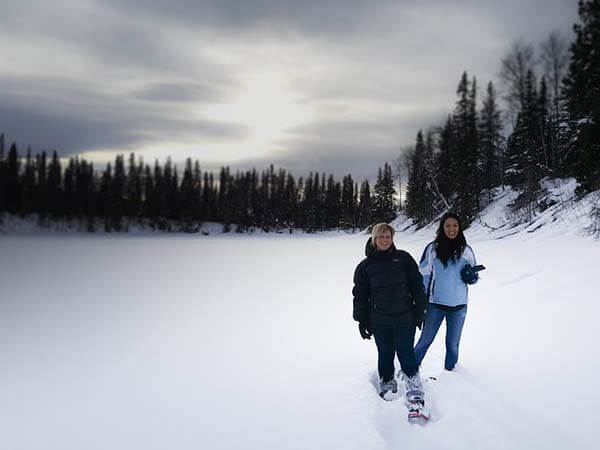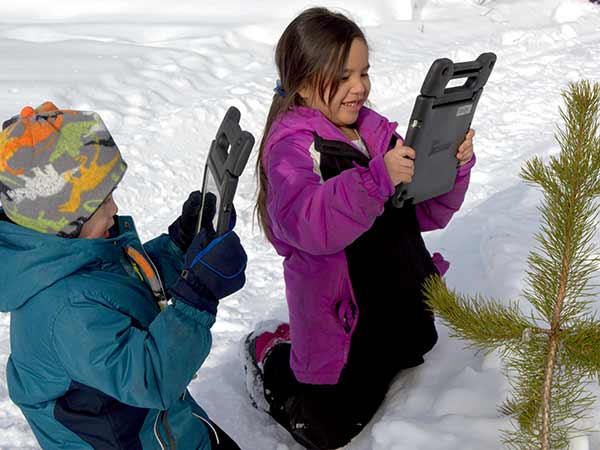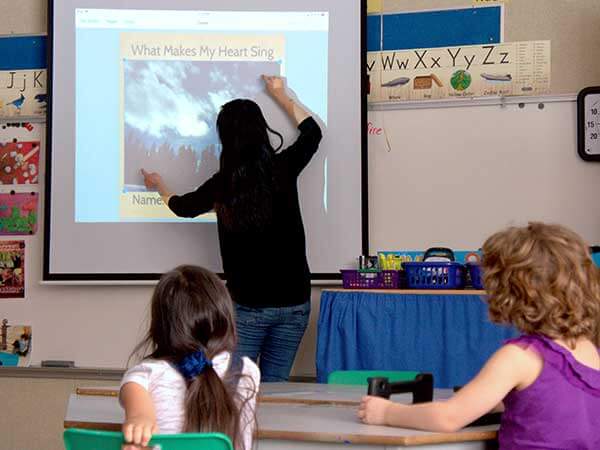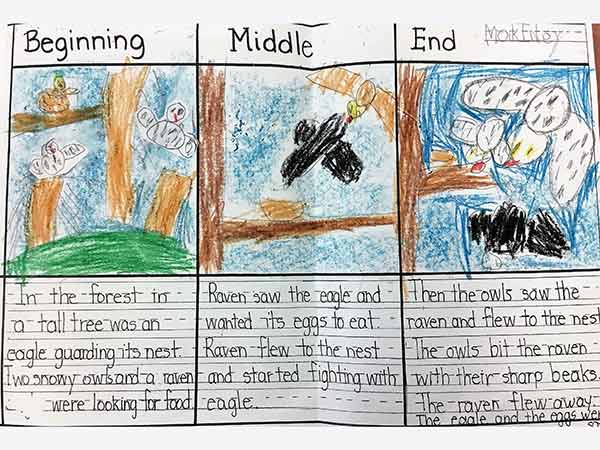The iPad Connection in Dease Lake

It’s minus 17 degrees outside and an impromptu blizzard is blowing in alongside the remaining rays of afternoon sun. But the temperature in Alison Gordon’s kindergarten classroom is far from icy. The youngest students of Dease Lake Elementary had just spent the afternoon “walking” through the forest trail, documenting features of the landscape that “makes their heart sing”. They’re now excited to share the pictures and ideas had they gathered outside with their teacher.
Dease Lake Elementary is located in a small, remote community, over 500 km to the next nearest town. For these young students, connection is a valuable aspect of life and learning. iPads are helping these students make these connections in their learning more authentic, as they capitalize upon the available technological tools to make their thinking more visible.
The class has received a set of iPads as part of their SET-BC Tier 2 Classroom-Based Solution. Using Book Creator, these young students are making connections to their outdoor learning by taking photographs, and recording their ideas orally with the iPad’s microphone. The technology has allowed their thinking to come alive, as they personally document their experience from the outdoors, bringing their learning back into the classroom. Once back inside, they’re able to further elaborate upon their experience, recording their ideas orally using the microphones and adding an oral layer of documentation.
Alison, the Kindergarten teacher, has found that the iPad’s capability of documenting photographs, live video and audio clips has allowed her to access her student’s learning in a more authentic way, connecting their thoughts and ideas with actual pictures and video of the activity. Particularly for her young students, the capability to document their ideas orally adds a depth to their work since they may not necessarily be at a stage in their language development where they can express their ideas fully in written form.
In the past, teachers of early literacy learners would typically scribe the students’ ideas next to their other artifacts (drawing, photograph, artwork etc.). This allowed the audience (parents, other students etc.) to get an idea of what message or story the work is trying to convey. Of course, scribing puts an intermediary between the creator or the story and the audience. It is nearly impossible for the scriber to fully capture all the idiosyncratic nuances of an oral- telling. There necessarily needs to be some interpretation and editing done by the scriber as they translate the oral-telling into written text.
With the advent of the audio-recording, the interpretation by the intermediary can be reduced or removed entirely. Now, next to the artifact, students can literally choose to insert their oral ideas directly on to the page. Teachers can still choose to insert a scribed text to accompany the work, but audiences no longer have to depend on that text as the main conveyer of the creator’s message. Rather, the recorded audio, the student’s own voice, along with their created artifact, becomes the main point of access for the audience. Connection is created at a more authentic and basic level. The audience of the work can hear the creator discuss the work in her own voice. For parents who cannot always physically be in the room with their child, for other interested audiences like family that lives far away, this connection to a moment of learning in the classroom, just became more real and authentic.


